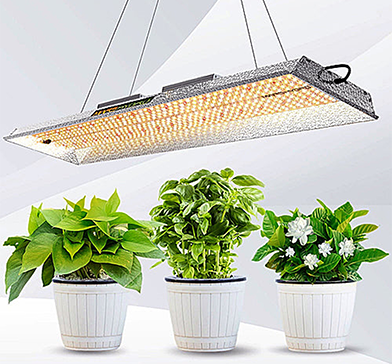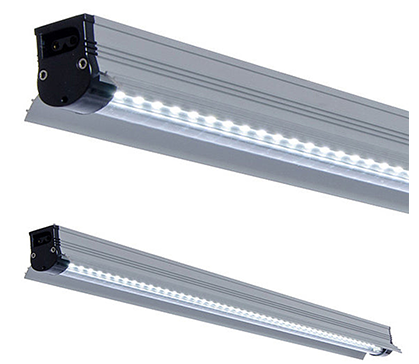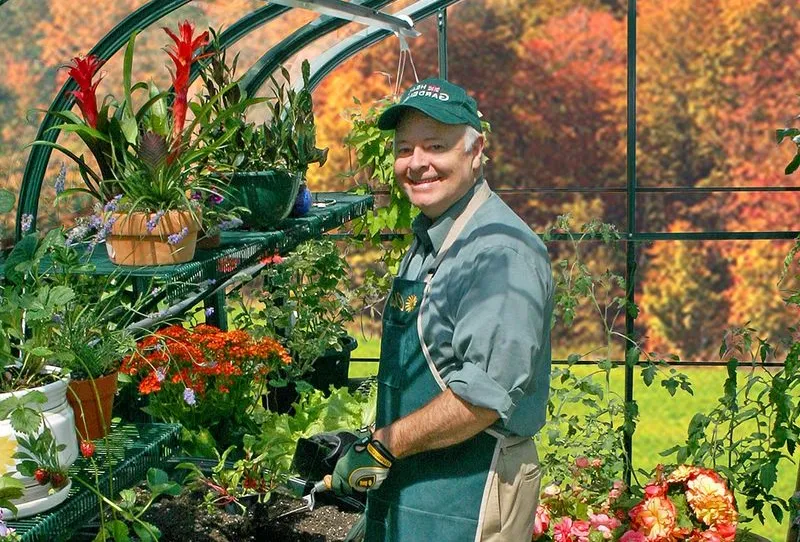How To Pick the Right Grow Lights for Your Greenhouse?
If you’ve set up your greenhouse correctly and placed it in the perfect location, your plants should have plenty of natural sunlight for most of the year. However, in some cases, whether due to climate or poor weather, your greenhouse plants may need a supplementary light source.
The right grow lights can boost your greenhouse’s productivity. They deliver the ideal light spectrum and intensity to support each stage of plant growth, from seedlings to fruiting plants.
Whether nurturing leafy greens, starting flowers, or growing fruit, explore some of the best options for greenhouse grow lights so you can get the most out of your setup.
The Role of Grow Lights in Greenhouses
If you live in a location with little sunshine most of the year or experience frigid winters, greenhouse grow lights can compensate for the lack of natural sunlight.
Sunlight is critical for your garden’s growth. It impacts the process of photosynthesis, where plants convert light into energy. Natural sunlight gives your plants the full spectrum of light wavelengths they need to develop roots, sprout leaves, and grow fruit. However, sometimes, your greenhouse may need more natural light. For example, if you are in a northern area of the country, daylight might only last 5 to 8 hours most of the year, which isn’t ideal for many plants.
When there is insufficient natural sun, grow lights fill the gaps to ensure your plants get the right amount and type of light to flourish. They allow you to extend daylight to a full 12 to 14 hours. This means that with the proper lighting, you can grow summer crops even during winter, keeping your harvests going year-round.
Types of Grow Lights
Choosing the right grow lights comes down to what you’re growing, how big your greenhouse is, and how much energy you want to use. Common grow light options include:
Fluorescent Grow Lights
Fluorescent greenhouse grow lights are popular for small greenhouses and indoor gardening, especially for herbs, seedlings, and other plants that don’t require high light intensity. These lights use mercury vapor inside the bulb to create ultraviolet light, which then hits a phosphor coating and turns into visible light.
Pros:
-
Moderately energy-efficient and cost-effective for smaller greenhouses
-
Ideal for seedlings, leafy greens, and low-light plants
-
Relatively cool, so they won’t burn sensitive plants
Cons:
-
Not powerful enough for larger plants or those that need intense light
-
Limited light spectrum compared to more advanced options like LEDs

Fluorescent lights are great for hobbyists or gardeners who focus on smaller plants. However, consider a stronger light source for mature, light-hungry plants.
LED Grow Lights
LED (Light-Emitting Diode) grow lights are becoming a favorite among greenhouse growers because they’re extremely efficient and versatile. Instead of using filaments or gasses like traditional bulbs, LEDs use semiconductors to produce light, which means they’re more durable and last longer.
Pros:
-
Highly energy-efficient and have a long lifespan, reducing maintenance costs
-
Provide customizable light spectrums (full-spectrum, red, blue) to suit different plant growth stages
-
Generate less heat than other types, minimizing the need for additional cooling systems
Cons:
-
Higher initial cost compared to other grow lights
-
Some models may require specific knowledge for installation and spectrum adjustment

One example of an advanced LED grow light is the Mars Hydro TSL-2000. It offers full-spectrum lighting with low power consumption, which is perfect for indoor plants. It’s energy-efficient, has dimming and daisy chain features, and provides strong light coverage for vegetative and flowering stages. These lights are a solid investment for anyone serious about maximizing yield and reducing energy costs.
High-Intensity Discharge (HID) Lights
High-Intensity Discharge (HID) lights are powerful light sources used mainly in large commercial greenhouses. Two main types are High-Pressure Sodium (HPS) and Metal Halide (MH).
HPS lights are used during the flowering stage, as they produce a warmer red/orange light. MH lights are used during the vegetative growth phase because they emit a cooler blue light.
Pros:
-
Extremely powerful, making them perfect for large, light-demanding plants like tomatoes or peppers
-
Widely used in commercial settings, with proven results for boosting plant yields
Cons:
-
Consume a lot of energy and generate significant heat, requiring more powerful ventilation and cooling systems
-
Shorter lifespan compared to LEDs, resulting in more frequent replacements
HID lights are a reliable option for large-scale operations or growers with plants that demand a lot of light. However, due to their energy usage, they come with higher operational costs.
Factors To Consider When Choosing Grow Lights
Choosing greenhouse lights requires more than simply picking a bulb—it’s about understanding what your plants need to thrive. Light spectrum, intensity, and energy efficiency affect how well your lighting supports plant growth. To get the most from your grow lights, consider the types of plants you’re growing, the size of your space, and your energy-saving goals.
Here are key points to keep in mind when selecting the ideal grow lights for your greenhouse.
Light Spectrum

Plants require different wavelengths of light for various stages of growth. Full-spectrum lights mimic natural sunlight, balancing both blue and red wavelengths. These lights are ideal if you want a simple, all-in-one solution.
However, some growers prefer targeted spectrum lights, which provide more blue light (400-500 nm) for the vegetative stage and more red light (600-700 nm) for flowering and fruiting.
Many modern LED lights allow you to control the spectrum, switching from blue-heavy light during the growth phase to red-saturated light during the flowering phase, ensuring optimal growth.
Light Intensity
Light intensity determines how much energy plants can absorb for photosynthesis. It is measured in several ways, including lumens (brightness), PAR (photosynthetically active radiation), and PPFD (photosynthetic photon flux density), which measures the light that reaches the plants.
Plants that flourish in full sunlight, such as tomatoes or cucumbers, require high-intensity light, while shade-tolerant plants like ferns or orchids do well with lower light levels. It’s important to match the intensity of your grow lights to what your plants need to help them grow strong and healthy.
Coverage Area
When choosing grow lights, consider the size of your greenhouse and the number of plants you’re growing. Grow lights must provide even coverage, ensuring all your plants receive enough light. You may need multiple lights or a combination of different types to cover a larger area.
You also need to position your lights correctly. For example, LED lights can be placed closer to plants without burning them, whereas HID lights need to be mounted higher due to their heat output to avoid burning the foliage. Think about installing an adjustable lighting system that allows you to move the lights up or down as plants grow.
Energy Efficiency
The cost of running grow lights can add up, so you need to choose energy-efficient options. LEDs are the most energy-efficient grow lights, consuming up to 85% less energy than traditional HID lights. While LEDs have a higher upfront cost, their lower energy consumption and long lifespan make them a cost-effective choice in the long run.
Calculating your grow light energy costs is easier than you think. Take their wattage, multiply it by the hours you use them each day, and then multiply that by your electricity rate.
For example, if you have a 300W light running 12 hours a day, and your electricity costs $0.12 per kilowatt-hour, your daily cost would be:
(300W ÷ 1000) × 12 hours × $0.12 = $0.43 per day
Heat Emission
Some grow lights, like HID and incandescent bulbs, give off a lot of heat, which can raise the temperature in your greenhouse. If you’re using these, you’ll need a ventilation system to prevent the interior atmosphere from getting too hot.
If you are concerned about temperature control, LED lights are the best option since they generate minimal heat. Always think about how your lights will affect your ventilation and cooling so your plants don’t become stressed from the heat.
Installation Tips for Grow Lights in Greenhouses
You must install your grow lights properly to get the best results from your greenhouse. Here are a few essential things to keep in mind:
-
Height adjustment. Use a pulley system or adjustable chains to easily change the height of your lights as your plants grow. This will keep the light intensity where it needs to be at every stage.
-
Even distribution. Stagger your lights to avoid hot spots and shadows. This helps ensure every plant gets the right amount of light for even growth.
-
Reflective surfaces. White walls or reflective materials can bounce light back onto your plants, helping to illuminate lower leaves and boost light efficiency.
-
Water resistance. Seal all electrical connections to prevent moisture infiltration and potential short circuits or electrical shocks.
-
Heat management. If you’re using lights that produce a lot of heat, like HID bulbs, consider adding fans or vents to manage heat buildup, especially in smaller spaces.
Always follow the manufacturer’s installation guidelines, and if you’re unsure about anything, hire an electrician to install or inspect your lighting system to ensure that it operates safely and efficiently.
Find the Best Grow Lights for Healthy, Thriving Plants
Unlock your garden’s full potential with the right greenhouse grow lights. Whether you’re after energy-saving LEDs or high-output HIDs for larger crops, Charley’s Greenhouse & Garden has options that match your growing goals. Explore our lighting solutions and essentials to support healthy, year-round plant growth.


